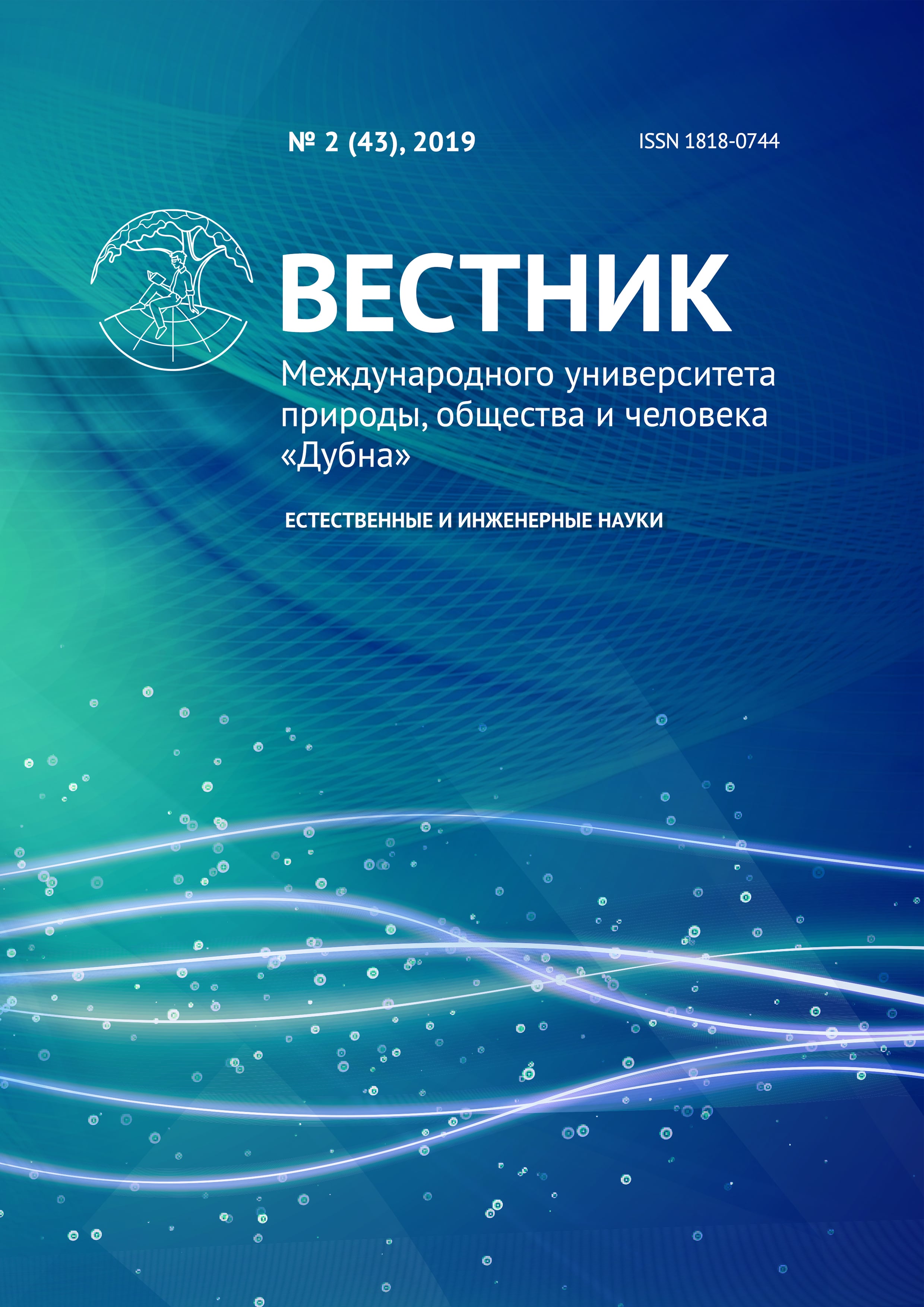Investigation of three-atomic clusters within Faddeev equations
Keywords:
triatomic clusters, Faddeev equationsAbstract
The binding energies of 4He3 and 4He26Li three-atomic clusters were calculated within the differential Faddeev equations. Obtained results show that different methods provide similar results for different potential models. It is shown that the excited state energy of each system is close to it’s respective two-body threshold, which could indicate on the Efimov nature of the excited state of 4He26Li.
References
Ефимов В.Н. Слабосвязанные состояния трех резонансно взаимодействующих частиц // Ядерная физика. 1970. Т. 12. С. 1080–1090.
Меркурьев С.П., Фаддеев Л.Д. Теория рассеяния для систем нескольких частиц. М.: Наука, 1985. 400 с.
Колганова Е.А., Мотовилов А.К. О механизме возникновения ефимовских состояний в тримере гелия 4He // Ядерная Физика. 1999. Т. 62. С. 1253–1267.
Kolganova E.A., Motovilov A.K., Ho Y.K. Complex scaling of the Faddeev operator // Nucl. Phys. A. 2001. V. 684. P. 623–625.
Kostrykin V.V., Kvinstinsky A.A., Merkuriev S.P. Faddeev approach to the three-body problem in total-angular-momentum representation // Few-Body Syst. 1989. V. 6. P. 97–113.
Przybytek М., Cencek W., Komasa J. et al. Relativistic and Quantum Electrodynamics Effects in the Helium Pair Potential // Phys. Rev. Lett. 2010. V. 104. P. 183003; Erratum // Phys. Rev. Lett. 2010. V. 108. P. 129902.
Kleinekathöfer U., Lewerenz M., Mladenoc M. Long Range Binding in Alkali-Helium Pairs // Phys. Rev. Lett. 1999. V. 83. P. 4717–4720.
Kleinekathöfer U., Tang K.T., Toennies J.P., Yiu C.L. Potentials for some rare gas and alkalihelium systems calculated from the surface integral method // Chem. Phys. Lett. 1996. V. 249. P. 257–263.
Zeller S., Kunitski M., Voigtsberger J., et al. Imaging the He2 quantum halo state using a free electron laser // Proc. Natl. Acad. Sci. U.S.A. 2016. V. 113. P. 14651–14655.
Kolganova E.A., Roudnev V. Weakly Bound LiHe2 Molecules in the Framework of ThreeDimensional Faddeev Equations // Few-Body Syst. 2019. V. 60. P. 32.
Kolganova E.A., Roudnev V., Cavagnero M. Helium trimer calculations with a public quantum three-body code // Phys. Atom. Nucl. 2012. V. 75. P. 1240–1244.
Stipanović Р., Vranješ Markić L., Zarić D., and Boronat J. Ground-state properties of weakly bound helium-alkali trimers // J. Chem. Phys. 2017. V. 146. P. 014305.
Di Paola C., Gianturco F.A., Paesani F. et al. Ground states of weakly bound three-atom systems: energies and shapes of 4 He2X clusters from Monte Carlo calculations // J. Phys. B. 2002. V. 35. P. 2643– 2660.
Aziz R.A., McCourt F.R.W., Wong C.C.K. A new determination of the ground state interatomic potential for He2 // Mol. Phys. 1987. V. 61. P. 1487–1511.
Tang K.T., Toennies J.P. and Yiu C.L. Accurate Analytical He-He van der Waals Potential Based on Perturbation Theory // Phys. Rev. Lett. 1995. V. 74. P.1546.
Suno H., Hiyama E., Kamimura M. Theoretical Study of Triatomic Systems Involving Helium Atoms // Few-Body Syst. 2013. V. 54. P. 1557–1560.
Jeziorska M., Cencek C., Patkowski K. et al. Pair potential for helium from symmetry-adapted perturbation theory calculations and from supermolecular data // J. Chem. Phys. 2007. V. 127. P. 124303– 124313.
Suno H. Structure of the weakly bound triatomic He2Li and He2Na molecules // Phys. Rev. A. 2017. V. 96. P. 012508.
Aziz R.A., Slaman M.J. An examination of ab initio results for the helium potential energy curve // J. Chem. Phys. 1991. V. 94. P. 8047–8053.
Yuan J.M., Lin C.D. LETTER TO THE EDITOR: Weakly bound triatomic He2Li and He2Na molecules // J. Phys. B. 1998. V. 31. P. L637–L645.
Stipanović Р., Vranješ Markić L. and Boronat J. Elusive structure of helium trimers // J. Phys. B. 2016. V. 49. P. 185101.
Kolganova E.A., Motovilov A.K., Sandhas W. The 4 He trimer as an Efimov system: latest developments// Few-Body Syst. 2017. V. 58. P. 35.

